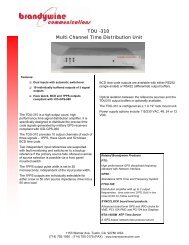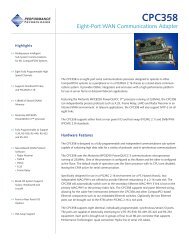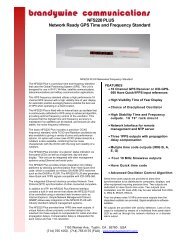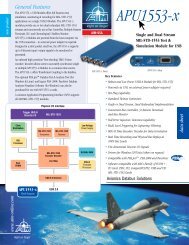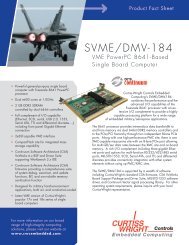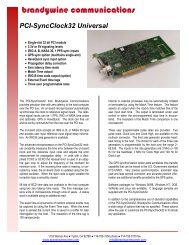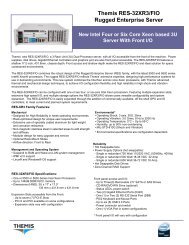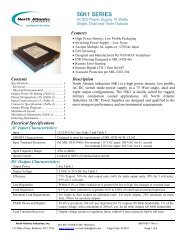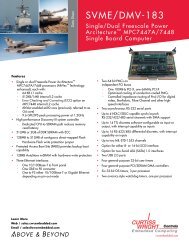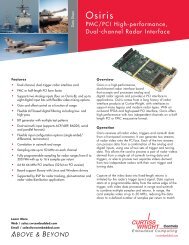PQI StandardII ICF Card 128MB~8GB WideTemp - Unitronix
PQI StandardII ICF Card 128MB~8GB WideTemp - Unitronix
PQI StandardII ICF Card 128MB~8GB WideTemp - Unitronix
You also want an ePaper? Increase the reach of your titles
YUMPU automatically turns print PDFs into web optimized ePapers that Google loves.
Datasheet<br />
Signal Name Dir. Pin No. Description<br />
-CE1,-CE2<br />
(PC <strong>Card</strong> I/O Mode)<br />
-CE1,-CE2<br />
(PC <strong>Card</strong> I/O Mode)<br />
<strong>Card</strong> Enable<br />
-CS0,-CS1<br />
(True IDE Mode)<br />
-CSEL<br />
(PC <strong>Card</strong> Memory Mode)<br />
-CSEL<br />
(PC <strong>Card</strong> I/O Mode)<br />
I 7,32 These input signals are used both to select the card and to indicate to the<br />
card whether a byte or a word operation is being performed. –CE2 always<br />
accesses the odd byte of the word. –CE1 accesses the even byte or the<br />
Odd byte of the word depending on A0 and –CE2. A multiplexing scheme<br />
based on A0,-CE1,-CE2 allows 8 bit hosts to access all data on D0 to D7.<br />
This Signal is the same as the PC <strong>Card</strong> Memory Mode signal.<br />
In the True IDE Mode -CS0 is the chip select for the task file registers while<br />
-CS1 is used to select the Alternate Status Register and the Device<br />
Control Register.<br />
While –DMACK is asserted, -CS0 and –CS1 shall be held negated and the<br />
width of the transfers shall be 16 bits.<br />
I 39 This signal is not used for this mode, but should be connected by the host<br />
to PC <strong>Card</strong> A25 or grounded by the host.<br />
This signal is not used for this mode, but should be connected by the host<br />
to PC <strong>Card</strong> A25 or grounded by the host.<br />
-CSEL<br />
(True IDE Mode)<br />
D15 - D00<br />
(PC <strong>Card</strong> Memory Mode)<br />
D15 - D00<br />
(PC <strong>Card</strong> I/O Mode)<br />
I/O 31,30,29,28,<br />
27,49,48,47,<br />
6,5,4,3,2,23,<br />
22,21<br />
This internally pulled up signal is used to configure this device as a Master<br />
or a Slave when configured in the True IDE Mode. When this pin is<br />
grounded, this device is configured as a Master. When the pin is open, this<br />
device is configured as a Slave.<br />
These lines carry the Data, Commands and Status information between<br />
the host and the controller.D00 is the LSB of the Even Byte of the<br />
Word.D08 is the LSB of the Odd Byte of the Word.<br />
This Signal is the same as the PC <strong>Card</strong> Memory Mode signal.<br />
D15 - D00<br />
(True IDE Mode)<br />
GND<br />
(PC <strong>Card</strong> Memory Mode)<br />
GND<br />
(PC <strong>Card</strong> I/O Mode)<br />
GND<br />
(True IDE Mode)<br />
In True IDE Mode, all Task File operations occur in byte mode on the low<br />
order bus D[7:0] while all data transfers are 16 bit using D[15:0].<br />
─ 1,50 Ground.<br />
This signal is the same for all modes.<br />
This signal is the same for all modes.<br />
Rev. A.5 9/45 Mar. 2009



